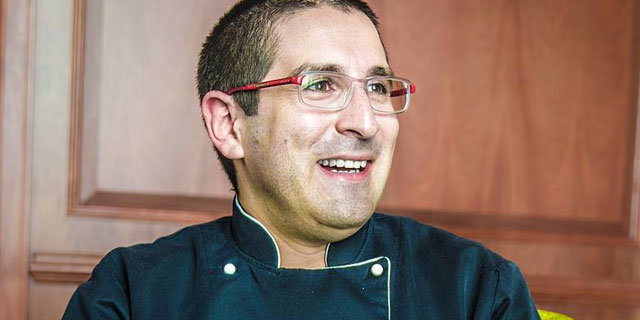"When I graduated, Ecuadorian food had a low reputation," said Ecuadorian chef Andrés Davila. "It was something we ate on the street, in the market. It was not a cuisine, so to speak. Cuisine meant Peruvian food or French. I wanted to show things could be different."
Davila is a native of Quito who studied culinary arts and hotel administration in Buenos Aires, after which he returned to his country of birth, Ecuador. Here he has worked as a chef at various high-end restaurants. Today he is executive chef at Casa Gangotena, a top-end boutique hotel in the heart of Quito's historic center.
At his restaurant, Ecuadorian ingredients form the base of his dishes. "The essence of Ecuadorian food is the very thing my grandmother cooked and used," Davila said. "She had a vegetable garden and fruit trees. Everything grew there. It was small but she knew exactly which plant helped to keep insects away from other plants. It's an intricate system. It's alive, and that, to me, is what Ecuadorian food is all about. My grandmother is my inspiration for Ecuadorian food."
Those family recipes make up a huge part of Davila's culinary point of view. He's always looking for family recipes and his suppliers are another source of information.
"When I asked the miller what he did with his quinoa flour he would say, 'I use it for soup'," Davila said. "If I asked how he used the corn flour he would answer, 'I use it for soup'. It took me six months of sitting and listening before they started sharing details or traditional recipes with me. This happened not just at the mill but also in the market. I knew certain herbs/spices are used for hot food and beverages, others for cold ones, but it took time to learn the specifics – anybody can sell me cedron (lemon verbena), but I am looking for the person who gives me the secret recipe."
Next, how Davila is transforming Ecuadorian cuisine… [pagebreak]
At the restaurant, Davila uses that information to design seasonal menus, which are changed every three or four months. And it's a collective project. Together, the cooks have a brainstorming session, present their ideas and make a selection. Any cook can contribute to a new menu, which is motivating, and working as a group can lead to creative results.
"For example, one day we wanted to do something with seco de chivo (goat stew)," Davila said. "We thought about presenting it in some kind of boligno (deep-fried mashed ball). Somebody came up with the idea to use llama meat instead, which in Ecuador is highly unusual to eat. Somehow the boligno became a spring roll, so we now serve a llama meat spring roll."
In that way, Davila is transforming Ecuadorian food from street eats to cuisine. And for that, you need two things, Davila said. First, find the best, freshest (if possible, organic ) product available, and second, use the right (traditional) cooking technique. If tradition says you grind aji peppers with a stone mortar, that's what you should do.
"For example, around Semana Santa Ecuadorians eat sopa fanesca, a soup which contains bacalhau seca (dried cod) and twelve kinds of grains," Davila said. "These grains are traditionally peeled by hand and that's what we do. We have as many as twenty-one cooks working here around that time. That's how they did it in ancient times; that's how we do it today."


![Making Mealtime Matter with La Familia: Easy Sofrito [Video]](https://thelatinkitchen.com/wp-content/uploads/2015/10/sofrito-shutterstock__0-500x383.jpg)
![Easy Latin Smoothies: Goji Berry Smoothie [Video]](https://thelatinkitchen.com/wp-content/uploads/2015/12/goji_berry-shutterstock_-500x383.jpg)
















![Fun and Fast Recipes: Fiesta Cabbage Salad [Video]](https://thelatinkitchen.com/wp-content/uploads/2015/11/fiesta_cabbage_slaw-shutterstock_-500x383.jpg)









